When our protein shakes are jacked, do we get jacked?
The use of protein with resistance exercise to make muscle gainz is one of the hottest topics in the world of lifting. It also happens to be a hot topic in the world of research due to muscle’s relationship to all things health and wellness in athletic, sedentary, obese, diseased, and/or aging populations. We can look at this complex topic in a number of ways. For instance, how much protein should we eat each day? Or, how much protein should we eat after we lift? Aragon and Schoenfeld (2013) wrote a wonderfully clear-headed review of these questions. Yet, we’re all still asking how much protein we should get. It’s never straight forward, either. For example, do larger folks need more protein than smaller folks to have the same gainz? That’s not an unreasonable question considering that we at Analytic Fitness often talk about protein consumption in studies on a gram per lb basis. Well, today’s study takes a look at these questions.
Methods
This study was an acute one. That is, it looked at a phenomenon over a “single” time frame and not over the long haul. In the case of lifting, an acute study looks at the effects following a single exercise or training session.
This study had two groups of male participants, all of whom were screened to ensure they were healthy.
- One group was known as the “LLBM” (Low LBM) group: comprised of males who had less than 143 lbs of LBM.
- The second group was known as the “HLBM” (High LBM) group: males who had more than 154 lbs of LBM.
The LBM was determined by a DEXA scan that they all received prior to the start of the study. They also had their weight, height, and 1RM in a variety of exercises measured. Below are the starting descriptive stats for the groups. As always, they’re group averages and rounded to the nearest whole number for the ease of viewing.
Everyone tracked their food in diaries for 3 days and then the researchers provided a “control” diet to everyone in the two days before testing. Participants had one test done and then after at least 2 weeks they had the second test. The timeline of the test sessions is described below and shown in this figure, taken from the study.
For each test, the participants went to the researchers after an overnight fast. They had blood taken and ate a “standard” breakfast. The macronutrients are listed below.
The participants then rested for 2 hours to establish baseline levels of everything. A tracer (think along the lines of DLW) was infused into their bloodstream an hour into the rest.
At 2 hours, the participants had a lifting session that involved a series of machines. They did 3 sets of 10 repetitions using 75% of their 1RM. The movements were: chest press, pulldown, leg curl, leg press, and leg extension.
Immediately after the participants finished the lifting session, they had a muscle biopsy taken of their quad muscles. Immediately following that, they had a drink with either 20 grams or 40 grams of whey protein. The drinks themselves also had labeled tracers that could be later detected in the blood and biopsy samples. Two more biopsies were taken of the quad at 3 hours and 5 hours after lifting. Blood samples were taken at the start of lifting, at the end of lifting, and a number of times throughout the 5 hours following lifting.
As I said above, the participants returned ~2 weeks later to repeat the session with the opposite dose of protein.
Results
The meat of what we’re talking about here is gainz. In physiology, that’s often measured by muscle protein synthesis. Synthesis is the response of muscle cells to training stimuli or to protein ingestion. Synthesis repairs and builds new muscle tissues, structures, and cellular machinery (Atherton & Smith, 2012). We can think of protein synthesis as our biological proxy for measuring gainz.
The researchers in this study measured the rate of synthesis in the quad muscle tissue and found that it was ~20% higher when participants had 40g of protein compared to when they had 20g of protein after their lifting sessions. That difference held true regardless of whether the participants had “high” or “low” levels of LBM. Below is a figure taken from the study showing this result.
As we can see in the first part of the figure, there was a whole range of responses to the protein after lifting. Some participants, regardless of how much protein they got, had half the synthesis response of other participants. This kind of phenomenon has come up before and will continue to come up when we see studies that show individual data points. Some responded a lot to the protein while some did not respond very much. The second part of the figure shows that, overall, the participants had a higher synthesis rate following a 40g protein drink. That was despite the range shown in the first part of the figure.
Thoughts & Implications
This study found a novel result that previous studies did not find. Prior studies had not shown a difference in synthesis rates following 20g vs 40g of protein. After explaining away a few things, these researchers made the case that the previous studies only ever used exercises that focused on the legs, as opposed to whole-body lifting. Participants in previous studies did not do whole-body lifting. These researchers made the case that more muscles engaged during a training session results in a greater need for protein to be available across the entire body. When protein is available in sufficient levels (aka 40g shakes), then the muscles can reach protein synthesis levels that are higher than when protein is not sufficient (aka 20g shakes).
Let’s be honest here, who does just one body part during their lifting sessions? We may say we’re just pumping the gunz for the beach this weekend, but then we also need to warm up on the treadmill a little first, hit some abz, and maybe do some triceps to round out the gun show. On any other day we’re likely doing a bunch of exercises that hit a group of muscles. The reality is that we rarely train just one muscle. Arguably, that’s not even happening when we do try to hit one muscle in a session. This study makes the case that “in the real world” more protein following our lifting may very well help us make peak gainz, whether or not we’re big enough to be competing at the Mr. Olympia this year.
Plain & Simply
There isn’t always an easy straight-forward answer to our questions. When we ask how much protein we should have after lifting, this study shows us that there are qualifications to our answers. If we’ve eaten 2 hours ago and then we had a whole-body lifting session, then more protein can squeeze out a little more gainz (on the order of 20% more) than we otherwise would get from half the protein. If we’re just pumping the gunz and getting ready for the beach, then we don’t seem to need a lot of protein after we lift to secure our gainz. Then again, this study looked at only a single session. Does an extra 0.01% per hour (yeah, that was the difference in rate) of protein synthesis even make a noticeable difference? Perhaps next time we’ll hold a journal club on a study that asked just that question...because this study really doesn’t answer the question we posed at the top!
If you have any questions about this study or anything I said, please feel free to leave a comment. I will get back to you and others may have insight to offer, too. If you have any questions or topic suggestions that you would like answered as a post, then please email me at robert@analyticfitness.com.
Don’t forget to like Analytic Fitness on Facebook, or follow me on Twitter or the other social medias!
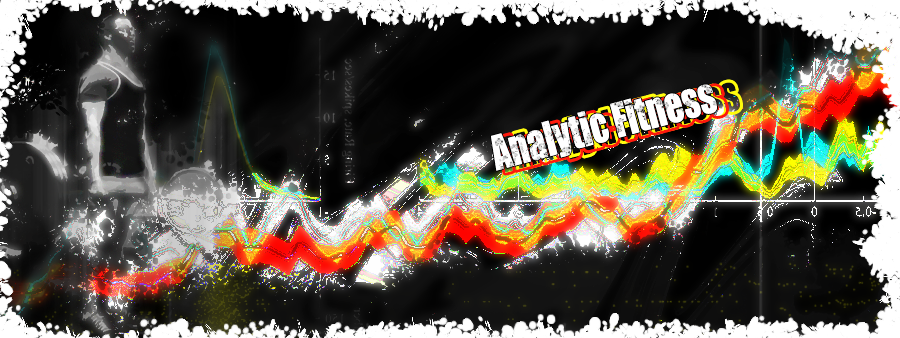
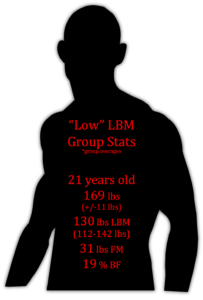
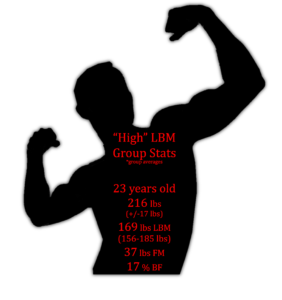
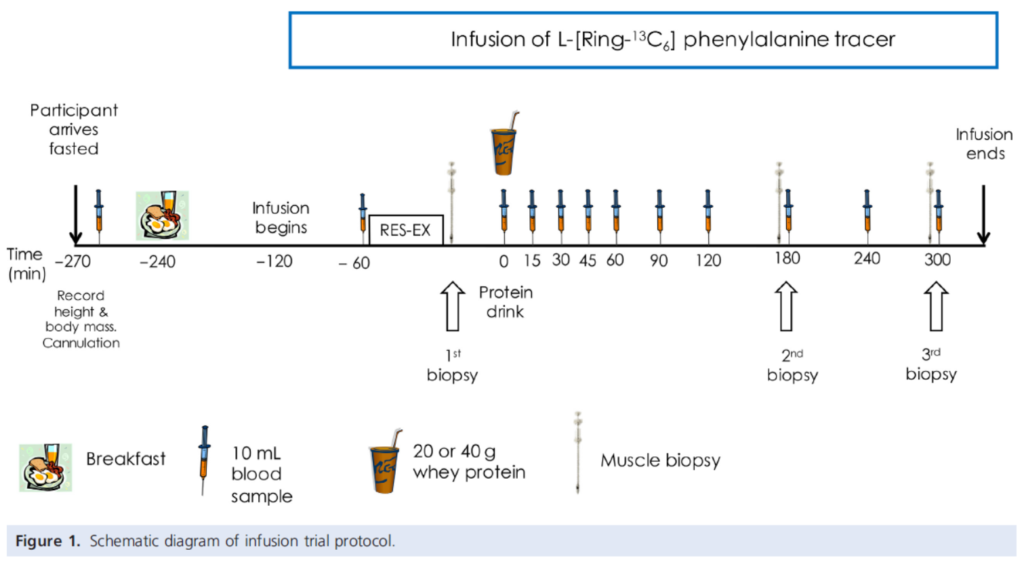
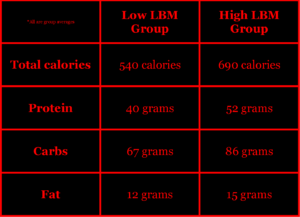
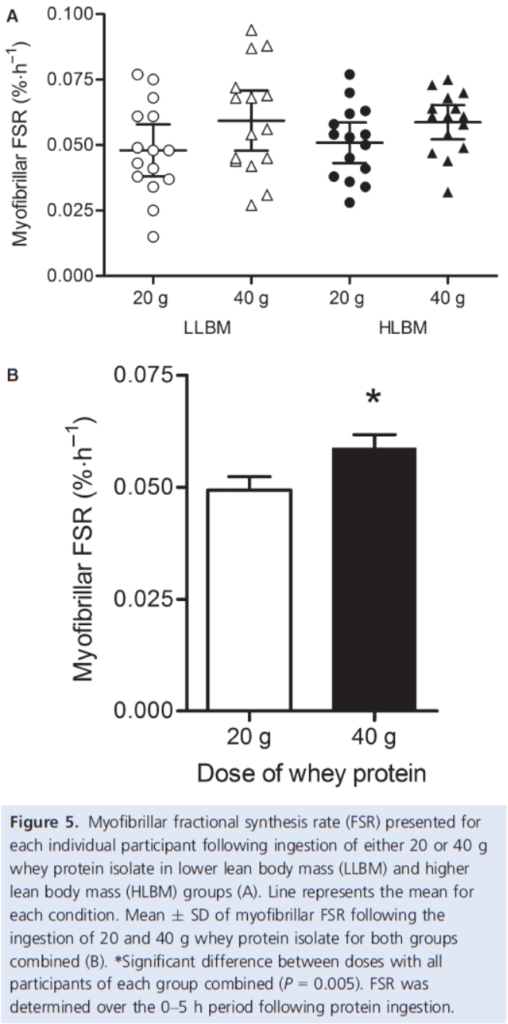




POST REPLY